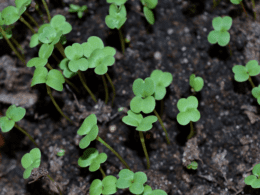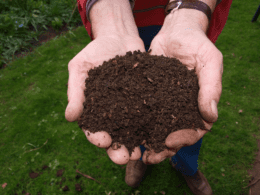Are you looking for a simple and affordable way to boost your health? Look no further than microgreens! These tiny plants are packed with nutrients and can easily be grown in your own home.
In this article, we will introduce you to the top six microgreens to grow, including mustard greens, sunflower, kale, broccoli, beets, and peas.
Not only are microgreens a great way to add flavor and color to your meals, but they also offer numerous health benefits. They contain high levels of vitamins, minerals, and antioxidants, making them a great addition to any diet.
Plus, growing your own microgreens is a satisfying way to connect with nature and take control of your own health. So whether you have a large backyard or a small indoor space, get ready to learn how to grow your own nutrient-packed microgreens!
Quick Takeaways
- Microgreens are popular with home gardeners due to their quick growth and nutrient-rich properties.
- The best and easiest microgreens to grow are mustard greens, sunflower, kale, broccoli, beets, and peas.
- Microgreens can be grown in soil or hydroponically, and seeds for any edible veggie or herb can be used except for nightshade family plants.
- Growing microgreens at home is a cost-effective way to get essential nutrients, add color and flavor to meals, and reduce waste while promoting sustainability.
Types of Microgreens
You can easily grow your own nutrient-packed microgreens at home, and there are many types to choose from. Mustard greens, sunflower, kale, broccoli, beets, and peas are all popular varieties that offer unique flavors and health benefits.
Growing techniques for microgreens are simple, and they can be grown in soil or hydroponically. Microgreens are packed with essential nutrients, and they’re a great way to boost your health.
Mustard greens are high in vitamins A and C, iron, and beta-carotene. Sunflower microgreens are high in vitamins A, B, D, and E, calcium, iron, and protein. Kale microgreens have a nutty flavor and are high in antioxidants, vitamins A, C, and K, and copper.
Broccoli microgreens are considered one of the most nutritious and packed with vitamins A, B, and C, iron, and copper. Beet microgreens are even more nutritionally dense than mature beets and have a vibrant purple color. Pea microgreens are crunchy and sweet, rich in vitamins A and C, folic acid, calcium, iron, and fiber.
Growing your own microgreens is a cost-effective way to get essential nutrients while enjoying the unique flavors and textures they offer.
Benefits of Growing Microgreens
Experience the multiple benefits of growing these tiny plants by adding color and flavor to your meals, reducing waste, and promoting sustainability. Here are 4 reasons why growing microgreens is a fulfilling and rewarding hobby:
- You can reduce waste: Growing microgreens at home means you can use up any leftover seeds from your regular gardening instead of throwing them away. Plus, you can compost any unused parts of the plants, reducing your environmental impact.
- You can connect with nature: Gardening is a great way to get outside and connect with the natural world. By growing microgreens, you’ll get to experience the joy of watching plants grow and flourish, and you’ll enjoy fresh, nutrient-packed produce straight from your own garden.
- You can save money: Microgreens are much cheaper to grow at home than to buy at the store, and they’re also a cost-effective way to get essential nutrients. Plus, growing your own food can help you save money on your grocery bill in the long run.
- You can promote sustainability: By growing your own food, you’re taking control of your own food supply and reducing your reliance on industrial agriculture. Plus, you’ll be able to enjoy fresh, nutrient-packed produce all year round without worrying about transportation emissions or packaging waste.
Frequently Asked Questions
What are some common mistakes to avoid when growing microgreens?
When growing microgreens, avoid over watering by only misting them lightly and ensuring proper drainage. Additionally, use proper lighting techniques by placing them near a sunny window or using grow lights.
How do you store harvested microgreens to keep them fresh?
To keep your harvested microgreens fresh, use proper storage techniques. Preservation tips include placing them in a container with a damp paper towel, using airtight containers, and refrigerating them. Container options include plastic bags, glass jars, or Tupperware.
Can you grow microgreens without using soil?
Yes, you can grow microgreens without soil using hydroponic methods. Benefits of soilless growth include faster growth, higher yields, and reduced risk of soil-borne diseases. Hydroponic systems can be used indoors or outdoors.
How do you know when it’s time to harvest your microgreens?
To harvest your microgreens, wait until they have reached their optimal growth time, usually between 7-21 days. Use harvesting techniques such as cutting the stems just above the soil line for soil-grown microgreens or gently pulling them out for hydroponically grown microgreens.
Are there any safety concerns when growing and consuming microgreens?
When growing and consuming microgreens, potential safety hazards can arise if hygiene practices are not followed. To ensure safety, always wash hands and tools before handling, use clean soil or hydroponic systems, and store in a cool, dry place.









